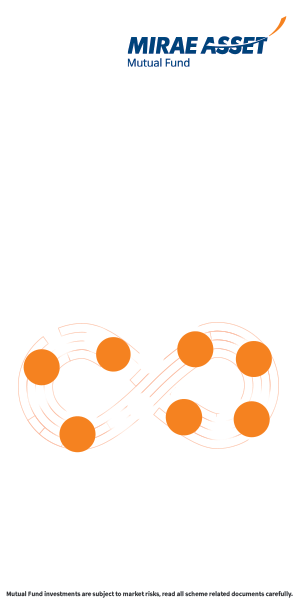What is Mutual Fund Net Asset Value

The textbook definition of Net Asset Value is, the market value of all the securities held in a mutual fund scheme’s portfolio less the liabilities divided by the total number of units outstanding. From my student days, I rarely found textbook definitions to be very illuminating. They were useful in answering exam questions, but not very helpful otherwise. I was always very interested in knowing how things work. Following that approach, let us first discuss how mutual funds work because it is the foundational basis of all concepts related to mutual funds.
How Mutual Funds work?
Mutual funds pool the money of different people and invest them in different financial securities like stocks, bonds, derivatives, money market instruments etc. The securities are selected based on the investment objective of the mutual fund scheme. For example, if the investment objective of a scheme is capital appreciation, then the scheme will invest in shares of different companies. If the investment objective of the fund is to generate income, then the fund will invest in fixed income securities (e.g. bonds, commercial papers etc.) that pay interest.
How are Mutual Funds priced?
Let us understand how understand how mutual fund units are priced. An Asset Management Company offers a new scheme for subscription through a process called New Funds Offering (NFO). In an NFO, the units of a scheme are priced at Rs 10. Let us suppose that, the AMC mobilizes a corpus of Rs 100 Crores from different subscribers (investors) during the NFO period. Since the issue price is fixed at Rs 10 for the NFO subscribers, the AMC creates and allots units to the subscribers based on the total amount mobilized. In this example, Rs 100 Crores was mobilized in the NFO. Since the issue price is Rs 10, the AMC will create 10 Crore units and allot them to respective subscribers based on the investment amount. So if you have invested Rs 1 lakh in an NFO, you will be allotted 10,000 units.
The money raised through NFO is invested in securities as per the investment mandate of the scheme, as outlined in the Scheme Information Document. Continuing with the example above, Rs 100 Crores was mobilized through the NFO and invested in various securities (stocks or bonds). The market prices of the securities change on a daily basis. Let us assume on the next day, the portfolio asset value of the scheme is Rs 102 Crores. For the sake of simplicity, let us ignore scheme expenses for the time being; we will discuss expenses later. The price of the unit will be Rs 10.2 (Rs 102 Crores divided by 10 Crore units outstanding). So if you were allotted 10,000 units in the NFO, your investment value would be Rs 102,000 (Rs 10.2 X 10,000)
If a mutual fund scheme is open ended, investors can buy or sell units at any time after the scheme commences operations, at a price determined by the total portfolio asset value and the number of the units outstanding. If the portfolio asset value is Rs 200 Crores and the total number of units outstanding is 15 Crores, then new investor can buy units of the scheme at a price of Rs 13.33 (Rs 200 Crores divided by 15 Crore units outstanding); existing investors can sell units of the scheme also at the same price, assuming no exit load(exit load is a penalty charged by the scheme for redemptions within a certain specified period). Net Asset Value of a scheme, in very simple terms, is the price at which investors can buy or sell units of the scheme.
Expense Ratio
For the services the AMCs provide like distribution, fund management, administration etc, they incur expenses and charge a fee to the unit holders to defray the expenses. Expense ratio is the percentage of mutual fund scheme assets for such expenses. In the example above we had ignored scheme expenses for the sake of simplicity. But in reality, scheme expenses have to be priced in Net Asset Value.
The scheme expenses are charged proportionately against the assets of the fund and are adjusted in the price of the unit. Investors should note that, the Net Asset Value of a mutual fund scheme is net of the expenses. Expenses of direct plans (which investors directly buy from the AMCs) are lower than regular plans (which investors buy through mutual fund distributors or financial advisors). Therefore, the Net Asset Values (and returns) of direct plans are higher than regular plans.
Theoretically, lower the scheme expense ratio it is better for investors. However, in my opinion, expense ratio should not be the only consideration for scheme selection, especially in equity funds. At the end of the day, the most important investment objective of investors is returns. Some fund managers can deliver superior returns to investors through superior stock selection, sector weightings and portfolio management; in investing parlance, the excess returns generated by fund managers for the same amount of risk is known as alpha. A fund manager’s track record of generating alpha is more important than expense ratio in equity funds.
Funds with lower NAVs are not cheap
There are a number of misconceptions among investors related to NAVs. Some of these misconceptions can be a result of lack of understanding and confusing between how stocks and mutual funds work; at the same time, misconceptions also arise sometime due to mis-selling. In this post, we have explained how mutual funds work. You should understand that mutual fund units, unlike stocks, derive their value from the underlying securities of the scheme. A stock’s price can be different from the book value, but a mutual fund’s NAV is the book value. If stock’s price is much higher than book value, we say that the stock is expensive and vice versa. However, since a mutual fund scheme’s NAV is the same as its book value, NAVs cannot be cheap or expensive. Older schemes will have higher NAVs and newer schemes will have lower NAVs. This does not mean that, older schemes are expensive and newer schemes cheap.
NFOs are NOT always attractive investments
This is a corollary of the misconception that lower NAVs are cheap because NFOs are issued at par value (Rs 10). This misconception also arises because many investors think that NFOs are similar to Initial Public Offerings (IPOs) and the general perception that IPOs are attractive investment options. Many investors are attracted to IPOs because of the possibility of listing gains; there is no such thing in NFOs. IPO and NFO pricing are very different. IPOs are priced at a premium to par value (or face value). The premium is determined by the issuer (company issuing the IPO) either as a fixed price or as price band within which price discovery will take place through the book building process (for IPO pricing, please read our post, Should you invest in IPOs). If the market thinks that the premium is low relative to the intrinsic value of the stock, then listing gains are possible (market price higher than offer price). On the other hand, the price (NAV) at which NFOs are issued is meaningless, because NAVs are always linked to market price. Whether an NFO is issued at Rs 10 or Rs 100, it will not make any difference to your return of investment. The NAV by itself, of a scheme, whether NFO or existing, is irrelevant; what matters is the growth in NAV over the period of your investment.
Funds which declare big dividends will not necessarily fetch higher returns
This is another misconception, again probably caused by looking at mutual funds in the same way, as we look at stocks. Stocks which declare good dividends are often rewarded by the market with share price appreciation, because good dividends are usually a sign of excellent financial health of the company. On the other hand, if a mutual fund scheme declares dividends, the NAV of the scheme instead of rising will fall. This is because dividends are paid from the profits made by the scheme. If the scheme does not pay dividends then the profit remains within the asset value (NAV) of the scheme.
Once a scheme declares dividends, the dividend is stripped out of the NAV and the NAV gets adjusted downwards. For example, if the Net Asset Value of a scheme is Rs 100 and the scheme declares a dividend of Rs 5, the Net Asset Value (ex-dividend) will fall to Rs 95 just after the dividend is declared. There is no advantage in investing in schemes which pay big dividends if you are interested in total returns. You should invest in dividend paying schemes, only if you want the dividend income; otherwise, it is better to invest in the growth option of the scheme.
Conclusion
So does NAV really matter? The absolute NAV only determines how many units you get allotted for a fixed amount of investment. But do you really care about how many units you own or instead, by how much your investment has appreciated in value? The appreciation in NAV is much more important than NAV itself; the appreciation in NAV is known as returns. That is why, we in Advisorkhoj, focus on returns and not NAV. In this blog post, we discussed how NAVs are determined and some common misconceptions regarding NAVs. Armed with this knowledge, hopefully, you will be able to make smarter investment decisions.
Mutual Fund Investments are subject to market risk, read all scheme related documents carefully.
RECOMMENDED READS
Mirae Asset Global Investments is the leading independent asset management firm in Asia. With our unique culture of entrepreneurship, enthusiasm and innovation, we employ our expertise in emerging markets to provide exceptional investments opportunities for our clients.
Quick Links
- Fund Manager Interview - Mr. Neelesh Surana - Chief Investment Officer
- Fund Review - Mirae Asset Emerging Bluechip Fund : Best Midcap Mutual Fund in the last 6 years
- Fund Review - Mirae Asset India Opportunities Fund: One of the best SIP returns in last 8 years
- Fund Manager Interview - Mr. Neelesh Surana - Chief Investment Officer
- Our Articles
- Our Website
- Investor Centre
- Mirae Asset Knowledge Academy
- Knowledge Centre
- Investor Awarness Programs
Follow Mirae Assets MF
More About Mirae Assets MF
POST A QUERY






